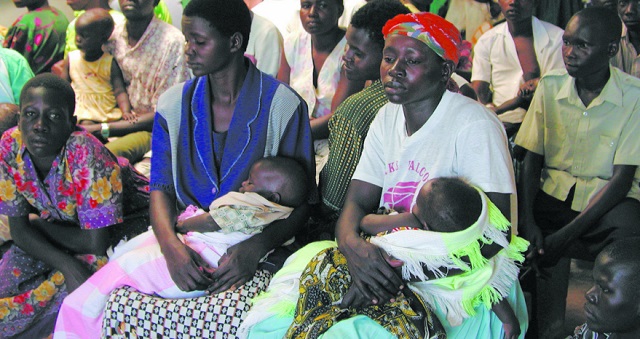
Can halve infant deaths among poor not rich
| THE INDEPENDENT | In some of the world’s least-developed countries, spacing births two years apart, instead of one, can nearly halve infant mortality rates, a study finds. But in more developed nations, increasing the interval between successive childbirths makes little difference to infant deaths, researchers report July 3 in `Demography’.
“At low levels of development, birth spacing is really important for infant survival,” says demographer Joe Molitoris of Lund University in Sweden. “But as development progresses, the relative importance of spacing gets weaker and weaker until it basically becomes zero.” Women’s access to better nutrition and medical care likely compensate for short birth intervals, Molitoris and his colleagues say.
Short birth intervals have been linked to poor health outcomes for moms and infants for decades, though the exact causes are not clear. Research has shown that the mothers’ bodies can struggle to recover and provide nutrients to children. In addition, siblings that are close in age may compete for the same resources, crucially breast milk, and are exposed to similar diseases.
But the new study adds to a growing body of evidence suggesting that the current World Health Organisation guidelines that women in all countries space babies three to five years apart are both more conservative than needed and not one-size-fits-all.
For instance, some studies out of wealthier countries, such as Sweden, Canada and Australia, show no link between infant health and birth spacing, while research out of poor countries shows the reverse.
Molitoris and his team combed through intermittent surveys given to 1.15 million mothers in 77 low- and middle- income countries from 1985 to 2016 to create a more complete picture. For moms ages 15 to 49, the researchers zeroed in on their children’s birth dates and survival among all younger siblings born within 10 years of an older sibling. All told, the women birthed 4.56 million children, about 370,000 of which died before age 1. Eighty-three percent of those deaths occurred among babies born within three years of an older sibling, the team found.
Babies born in the shortest birth intervals to uneducated mothers living in countries with high infant mortality — at least 100 babies dying for every 1,000 births — were in the greatest danger. (The researchers used infant mortality rate as a proxy for a country’s level of development.) In those circumstances, babies born within one year of an older sibling had around a 22 percent chance of dying before age 1. That chance dropped to about 13 percent when the birth interval increased to two years, Molitoris says.
But, like the earlier research showed, the link between infant mortality and birth spacing began to disappear as infant mortality rates dropped. Specifically, spacing births at least three years apart ceased to matter when a country’s infant mortality rate fell to about 50 or less infant deaths per 1,000 births, the researchers found.
The study “has the value of being comprehensive, maybe the best sum-up we’re going to get on this issue,” says demographer John Casterline of Ohio State University in Columbus. But, he says, it obscures the progress that has been made in recent years.
Thanks to WHO campaigns and other interventions, birth intervals have been increasing worldwide, Casterline says. “I think it’s great science,” Casterline says, but “they missed the big story” by looking at data back to the 1980s instead of zooming in on the past 10 to 15 years.
Shrinking birth intervals do remain a cause for concern in some parts of the world, though. In a 2018 study in the `Journal of Biosocial Science’, researchers looked at surveys given to mothers from 2000 to 2016 to understand fertility trends. That study attributed rising fertility (which is linked to shorter birth intervals) across Central Africa to overall declines in postpartum abstinence rates and breastfeeding duration. Continuing to breastfeed after giving birth can suppresses fertility, particularly in the early months.
In those areas, Molitoris says, campaigns to encourage exclusive breastfeeding during a baby’s first few months could eliminate at least the shortest and most dangerous birth intervals. Avoiding pregnancy during just those months could save a lot of lives, he says.
****
 The Independent Uganda: You get the Truth we Pay the Price
The Independent Uganda: You get the Truth we Pay the Price


